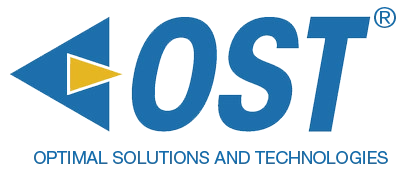Simulate Smarter. Improve Outcomes.
In resource-constrained environments, the ability to make informed decisions before taking action is essential to mission success. OST’s Digital Twinning capabilities help government agencies simulate their workflows, predict outcomes, and optimize operational performance before any code is written, or resources are deployed.
Our digital twin model entire business and software development processes using Discrete Event Simulation (DES) and Monte Carlo Simulation to replicate complex processes. These high-fidelity process twins give organizations the power to test “what-if” scenarios, identify bottlenecks, and understand root causes of delays or inefficiencies. Whether optimizing Agile sprint planning or complex defense logistics, OST provides a data-driven edge to deliver more, faster, smarter, and with less risk.
Virtual, Dynamic, and Real-world Digital Twinning Capabilities
- Process Simulation (DES & Monte Carlo)
- Causal Analysis & Root Cause Detection
- What-If Scenario Testing
- SAFe Implementation, Sprint & PI Planning
- Anomaly Detection
- Resource Allocation & Utilization Optimization
With OST, digital twinning becomes more than analytics—it becomes a trusted daily tool for process evolution, resource alignment, and mission optimization.
Visualize Success
OST’s digital twins do not just simulate operations, they improve them. Our tools help customers predict success, eliminate waste, and optimize the way work gets done. The digital twin technology becomes more than analytics, it becomes a daily tool for process evolution, resource alignment, and mission acceleration. Our digital twins provide dynamic modeling capabilities, enabling decision support grounded in real data rather than assumptions. They allow our users to simulate various scenarios, predict potential issues, and optimize performance.
CASE STUDY:
Digital Twins Deliver Speed with Quality
Challenge
The National Telecommunications and Information Administration (NTIA) faced significant challenges coordinating spectrum access for commercial space launches across a fragmented landscape of federal agencies and private launch providers. Existing systems were isolated, minimally integrated, and not designed to handle the surge in spectrum use driven by the growing commercial space sector. Communication between entities like SpaceX, the Commercial Space Federation, the FCC, NTIA, NOAA, NASA, and the DoD was often delayed or inefficient, risking launch schedules and national interests.
Solution
OST leveraged digital twinning to help NTIA develop a centralized, scalable coordination platform to bridge these gaps—enabling real-time, multi-agency collaboration for spectrum request processing and laying the foundation for broader applications in spectrum management beyond just space launches.
By creating a virtual replica of the entire coordination process, we simulate how a frequency request moves through each agency, spot bottlenecks early, and fine-tune the workflow before it ever impacts a real mission. Long term plans include incorporating a sophisticated algorithm that is reduced to a green light/red light check if the frequency can be used at all based on agency use in the background so agencies can make faster, smarter decisions to respond to the TPC or commercial provider.
We are also using a digital twin of the portal itself. This enables the testing of new features, monitors system stress under heavy loads, and resolves bugs before they become user problems to continuously improve the experience for both government and industry users. Because our digital twin evolves with live data, we are building smarter visual tools and dashboards that show the full picture—what is happening, what’s next, and where things can improve ahead of actual final usage.
Outcome
The portal currently serves as a clearinghouse and repository of site path information to manage coordination between Federal Government operations and non-Federal Government links. We are helping NTIA reduce the current 90-day advance coordination requirement, enabling commercial providers to support last-minute changes to launches with alternate dates closer to the original. The FCC rulemaking notice is now automated ahead of time, allowing NTIA to align with the regulatory requirement for streamlined coordination. Digital twinning is not just a tool; it’s how OST is modernizing mission execution from the ground up.
